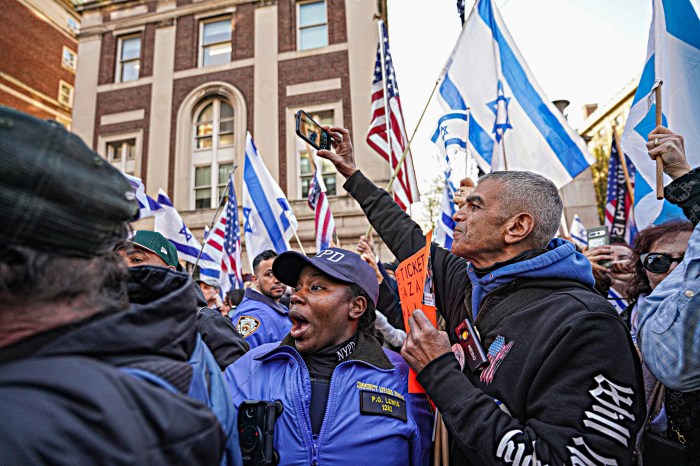By Joe Anuta
Student farmers at John Bowne High School in Flushing were visited last week by a mobile truck dispensing maple syrup cotton candy along with doses of education about a burgeoning Empire State commodity.
On Oct. 3, members of the Future Farmers of America, from Verona, N.Y. paid a visit to the Main Street school’s farm to showcase what some syrup-slingers call “liquid gold.”
“I want to expose my kids to as many aspects of the agricultural field as possible,” said Steve Perry, assistant principal and head of the agriculture program at the school.
John Bowne boasts the largest FFA chapter in the state, which is significant considering agriculture is the biggest industry in New York’s economy, according to Stavisky. And, according to Perry, it is crucial to educate youngsters about what is going on elsewhere in the north country.
Gone are the days of making syrup by hammering a spout into the side of a trunk and then boiling the harvested liquid for hours, according to Keith Schiebel, the FFA advisor at Vernon-Verona-Sherrill HS upstate, which runs the Mobile Maple Trailer that the students tow around the state and use to educate about the maple syrup industry.
“This is a high-energy process,” he said.
And in order to keep the state competitive, Schiebel said modern technology like reverse osmosis, which basically presses the raw sap through a microscopic filter and separates the end product from water, is essential to stay in the syrup game.
New York is currently the second-highest producer of the stuff in the country after Vermont, but is still dwarfed by the Canadian city of Quebec, sometimes referred to as the Saudia Arabia of maple syrup.
Nearly 80 percent of the world’s syrup comes from north of the border, and since a gallon of the sweet stuff sells wholesale for about $40, it is nothing to brush off. In August, thieves stole millions of dollars worth of syrup from a Canadian warehouse, according to a CNN report, though law enforcement officials located the missing condiment last week.
With a vast northern forest, New York has the potential to grow. According to a 2011 report by professors at Cornell University, the entire northeast only uses about 1 percent of tappable trees, even with the market for natural syrup on the rise.
“People’s personal preferences are changing,” Schiebel said. “They are becoming more health-conscious, so the market needs to grow.”
Syrup straight from the trunk provides a natural alternative to the corn syrup-based brands that adorn many breakfast tables across the country, Schiebel said.
New York City has an abundance of maple trees lining its streets, according to a 2006 tree survey that pegged the number at around 83,000.
City-dwellers, however, should not think about drilling a hole in one, which would be illegal.
The importance of agriculture on a state level was recognized by several of the area’s lawmakers at the syrup-tasting event.
“From Empire State Apples to one of the nation’s largest dairy industries, to the wineries stretching from Buffalo to Montauk, New York is an agricultural powerhouse,” said state Sen. Toby Stavisky (D-Whitestone), who learned about maple syrup production along with state Assembly members Grace Meng (D-Flushing) and Michael Simanowitz (D-Electchester).
Reach reporter Joe Anuta by e-mail at januta@cnglocal.com or by phone at 718-260-4566.


































